#shalabhanjika
Photo
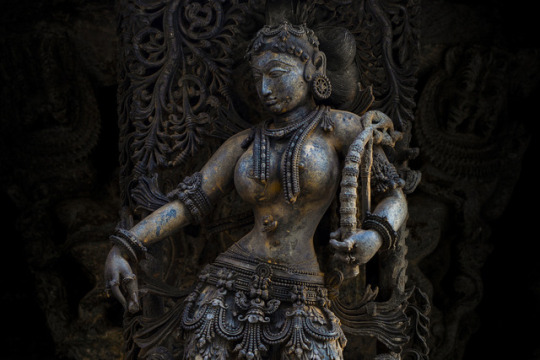
Madanika
322 notes
·
View notes
Video
#birthofbuddha #ujjwalankur #paintingminiatures #paintingexhibition #beautiful #gandharaart #shalabhanjika #exhibitions https://www.instagram.com/p/B8yB_y6FsZp/?igshid=qtix7hygqes7
#birthofbuddha#ujjwalankur#paintingminiatures#paintingexhibition#beautiful#gandharaart#shalabhanjika#exhibitions
0 notes
Photo


Draupadi Ratha (Mahabalipuram, India).
This is the smallest and simplest of the Pancha Rathas. Shaped to resemble a hut with a thatched roof, it is dedicated to the Hindu goddess Durga, a warrior form of the supreme goddess Devi. Two carved shalabhanjikas (fertility figures linked to Durga) are guarding the door.
#history#architecture#sculpture#hinduism#indian architecture#indian sculpture#india#tamil nadu#mahabalipuram#pancha rathas#draupadi ratha#devi#durga
41 notes
·
View notes
Photo
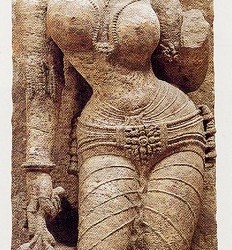
Title: Tree Dryad (Shalabhanjika)
Metropolitan Museum of Art
Date: 12th–13th century
Culture: India (Orissa)
Medium: Ferruginous stone
Dimensions: H. 42 1/2 in. (108 cm); W. 14 in. (35.6 cm)
Classification: Sculpture
Credit Line: Rogers Fund, 1965
Accession Number: 65.108
This sculpture originates from a region in eastern India that is known for its hundreds of ancient Hindu temples. Typically “seductive” female figures are carved into the facades in these temples, although most can not be identified as particular women or deities, and therefore some are identified as nature spirits, while others serve as consorts and companions to the gods. In this sculpture, the blossoming branch in the woman's hand and the tree trunk in the background suggest that she is a wood nymph.
1 note
·
View note
Photo

#dakshindiaries Panch rathas (5 chariots) complex #Mahabalipuram #Mamallapuram #TamilNadu The Draupadi ratha - female dwarpalsks (guards or gatekeepers) or shalabhanjikas can be seen guarding the entrance Another unique feature in the complex #nikond3400 #IamNikon #nikonindia #heritage #travelphotography #travel #travelblogger #natgeoindia #ngtindia #lpmi #lonelyplanetindia #architecture #AncientIndia #hinduism #Trover #UNESCO #worldheritagesite #globetrotter #worldtraveller https://www.instagram.com/p/CAWZ7hzBB2O/?igshid=19thfs558y78n
#dakshindiaries#mahabalipuram#mamallapuram#tamilnadu#nikond3400#iamnikon#nikonindia#heritage#travelphotography#travel#travelblogger#natgeoindia#ngtindia#lpmi#lonelyplanetindia#architecture#ancientindia#hinduism#trover#unesco#worldheritagesite#globetrotter#worldtraveller
0 notes
Photo
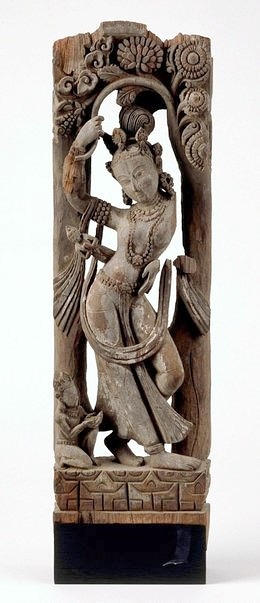
Título: Puntal del templo (tunala) que representa el nacimiento de Buda
Siglo XIV - Siglo XVI
Artistas: Artista desconocido
Acerca de
Este puntal del templo nepalí bellamente tallado representa a la Reina Maya dando a luz a Siddhartha, el futuro Buda. Según la leyenda, se cree que la Reina quedó embarazada después de un sueño en el que vio a un elefante blanco entrar a su lado. Esto fue considerado como una profecía de un nacimiento auspicioso y 10 meses lunares después, la Reina dio a luz desde su lado derecho. De acuerdo con la convención iconográfica, la Reina Maya es representada como una diosa de los árboles (shalabhanjika), agarrando una rama floreciente que sobresale con su mano derecha. Su cuerpo, aunque representado en una pose estilizada, se balancea y es elegante, los pliegues de su prenda inferior agregan movimiento a su elegante figura. Siddhartha es representada como una figura diminuta que emerge de su lado derecho. Es representado como el Buda adulto con 'ushnisha' y rizos de concha de caracol aparentemente vestidos con túnicas budistas. En la esquina inferior, a la derecha de su figura, está el dios Indra, el Rey de los dioses. Se lo representa como una pequeña figura arrodillada a sus pies con las manos extendidas para recibir al recién nacido. Este puntal del templo es un maravilloso ejemplo de uno de los Ocho Grandes Eventos de la leyenda budista.
Departamento de Arte Asiático, AGNSW, febrero de 2000
Detalles:
Lugar donde se realizó el trabajo: Valle de Katmandú → Nepal
Fecha: Siglo XIV - Siglo XVI
Categoría de medios: Escultura
Materiales usados: madera con rastros de pigmento
Dimensiones: 59,0 x 17,2 x 10,0 cm
Fecha de firma: No firmado. Sin fecha
Crédito: DG Wilson Legacy Fund 2000, Art Gallery NSW
0 notes
Photo
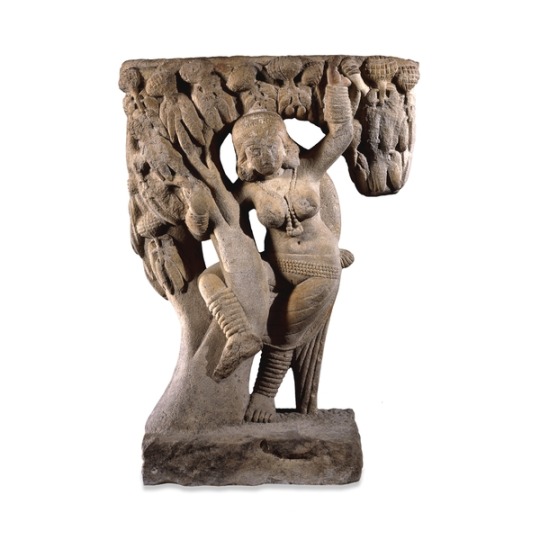
Sandstone figure of Shalabhanjika Yakshi, Sanchi, Central India (1st century AD)
“The Great Stupa at Sanchi is said to contain the relics of the Buddha himself. The form of the stupa was a development of the ancient practice of erecting a hemispherical mound over the remains of the dead. According to tradition the Buddha said that his remains should be interred in a stupa built at a crossroads and thus easily accessible to all.” (Source)
#sandstone#figure#Shalabhanjika#Yakshi#sanchi#india#indian art#stupa#buddha#buddhism#buddhist#ancient history#ancient art#eastern art#art#history#art history
2 notes
·
View notes
Photo
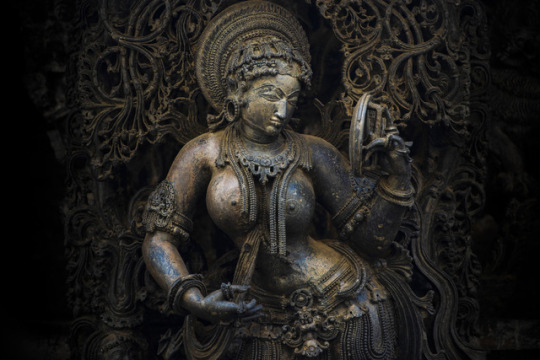
Madanika
117 notes
·
View notes
Photo

Madanika
65 notes
·
View notes